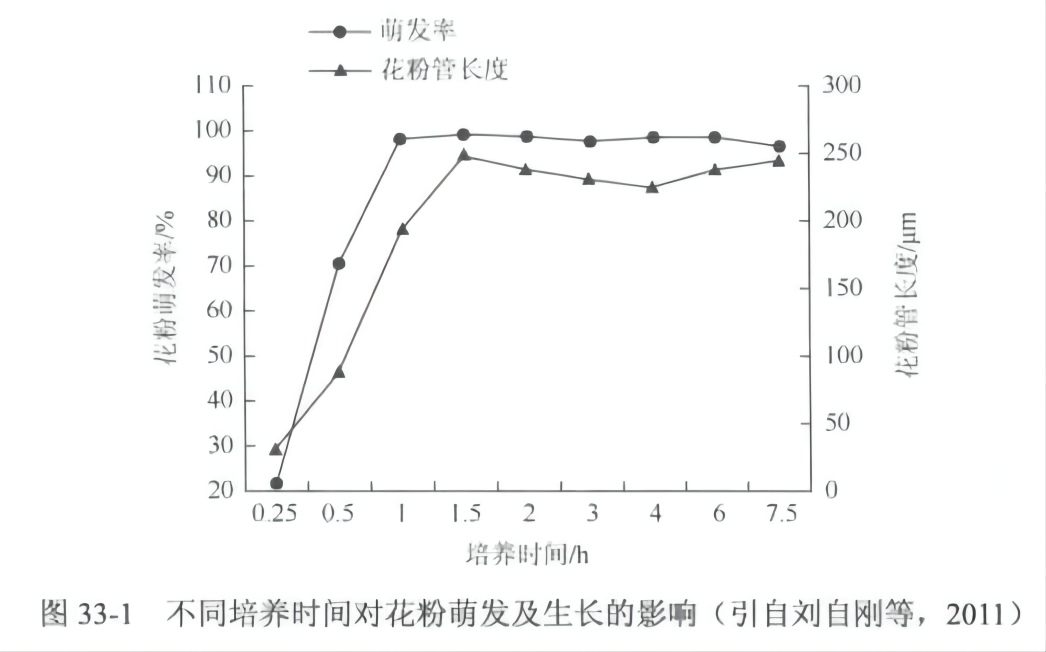After landing on the stigma, pollen, the male gametophyte of plants, grows pollen tubes through germination and transports sperm cells to the embryo sac to complete fertilization. Pollen germination, as well as the growth of pollen tubes, is an important event in the process of sexual reproduction in plants, and it is often used as an important system to study the polar growth, differentiation, and signal transduction of plant cells.
Operation method
Observations on pollen germination and pollen tube growth in vitro
Materials and Instruments
Equipment: Move The basic process of observing in vitro pollen germination and pollen tube growth can be divided into the following steps: The effects of calcium ions, boron ions, polyethylene glycol (PEG) and sucrose concentration in the culture medium on the in vitro germination and growth of lily pollen were investigated using the liquid culture method. For example, four different concentrations of sucrose were added into the liquid medium [ 0.99 mmol/L KNO3, 0.08 mmol/L MgSO4, 0.162 mmol/L H3BO3, 1.27 mmol/L Ca( NO3 ) 2, pH 5.6], and a certain amount of pollen was taken into the liquid medium at 28 ℃, 100 ℃, 100 ℃, and 100 ℃. A certain amount of pollen was taken and incubated in the above liquid medium at 28 ℃ and 100 r/min for 2 h. Then the samples were fixed, and the effects of different concentrations of sucrose on pollen germination and pollen tube growth were statistically analyzed, and the results were repeated three times for each concentration, and each time, three fields of view were randomly observed, and the number of pollen grains observed in each field of view was at least 50, so as to count the rate of pollen germination; meanwhile, the length of pollen tubes was measured with a micrometer, and 10 pollen tubes were randomly measured for each field of view. At the same time, the length of pollen tubes (μm) was measured by micrometer, 10 pollen tubes were measured randomly in each field of view, and the average value was calculated. The data were processed by Excel and analyzed by SPSS for significance analysis, and then the results were presented in the form of graphs and tables, refer to Table 33-1. Sucrose concentration/(g/L) Sprouting rate/percent Pollen tube length/μm 1 2 3 Average 1 2 3 Average 0 64.4 79.0 71.3 71.6 407.3 427.3 392.0 408.9 50 72.3 89.0 81.5 80.9 493.7 633.0 364.7 497.1 100 96.0 97.0 98.6 97.2 618.7 478.3 497.7 531.6 150 38.1 85.0 86.9 70.0 180.7 301.0 347.7 276.5 200 3.1 6.1 6.9 5.4 153.3 164.6 181.8 166.6 Source: Liu Zigang et al. 2011.
Lily pollen.
Apparatus:
① Microscope
① Microscope ② Slide
① microscope ② slide ③ coverslip
① microscope ② slide ③ coverslip ④ tweezers
Reagents:
① KNO
3
① KNO 3 > MgSO
4
> H3BO3
② Ca(NO)
3
) 2 > Sucrose
(II) Optimization of culture conditions for in vitro culture
Using lily pollen as the material, the liquid culture method was used to study the effects of pH of the culture medium, culture temperature and culture time on the growth of lily pollen in vitro.
For example, a certain amount of pollen was taken into liquid medium [10% sucrose, 0.99 mmol/L KNO3, 0.08 mmol/L MgSO4, 0.162 mmol/L H3BO3, 1.27 mmol/L Ca( NO3 ) 2, pH 5.6] at 28 ℃ and 100 r/min, and incubated at 1h, 1.5h, 2h, 3h, 4h, 6h, 4h, 6h and 5h, The samples were taken at 1h, 1.5h, 2h, 3h, 4h, 6h and 8h, and then observed and statistically analyzed the pollen germination and pollen tube growth under the microscope.
The data were processed and analyzed by Excel and the results were presented in the form of graphs and charts, refer to Figure 33-1.

For more product details, please visit Aladdin Scientific website.
